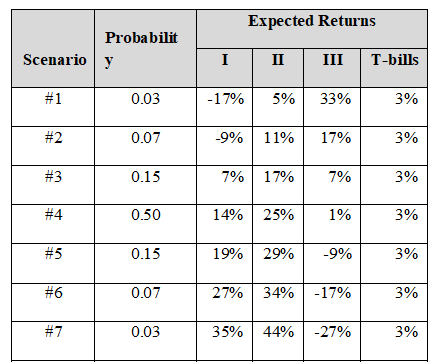If you receiveunwanted questions in the middle of your presentation,you should remind the questioner that there will be time for questions at the end.
Answer the following statement true (T) or false (F)
True
If you receive unwanted questions in the middle of your presentation, don't ignore them. Simply remind the questioner that you'll leave plenty of time for questions at the end. See 5-6: Create and Deliver Successful Verbal Presentations: Hook 'Em and Reel 'Em In!
You might also like to view...
According to GAAP, interest cost incurred to finance construction of an asset must be capitalized in which of the following situations?
A) when the asset is inventory that is routinely manufactured in large quantities on a repetitive basis B) when an asset is used in other than the earning activities of the firm C) when an asset is ready for its intended use D) when an asset is being constructed for a firm's own use
The following table contains the probability distribution for the returns of three securities over the next year.

a) Determine the expected return and standard deviation of each security.
b) Calculate a variance and covariance matrix for these four securities using the given probabilities.
c) Calculate a set of five portfolios that make up the capital market line using the Solver.
d) Create a chart of the CML including the original securities.
e) Repeat part (c) using a T-bill of 9% and include your results in the chart of part (d).
f) Repeat part (c) using the original T-bill rate but the using the following probability for each scenario:

And include your results in the chart of part (d).
As part of the scope statement, the ________ further narrow the subject by focusing on constraints or exclusions
Fill in the blank(s) with correct word
What is a primary drawback of a localized multidomestic strategy?
A. It makes it very difficult to take into account significant country-to-country differences in distribution channels and marketing methods. B. It hinders the use of cross-border coordination of a company's activities and increases a company's vulnerability to adverse shifts in currency exchange rates. C. It is unsuitable for competing in the markets of emerging countries and posing added difficulty in modifying a company's business model to compete on the basis of low price. D. It makes it difficult and costly to be responsive to country-to-country differences in customer needs, buying habits, cultural traditions, and market conditions. E. It hinders the transfer of a company's competencies and resources across country boundaries and hinders the pursuit of a single, uniform competitive advantage in all country markets where a company operates.